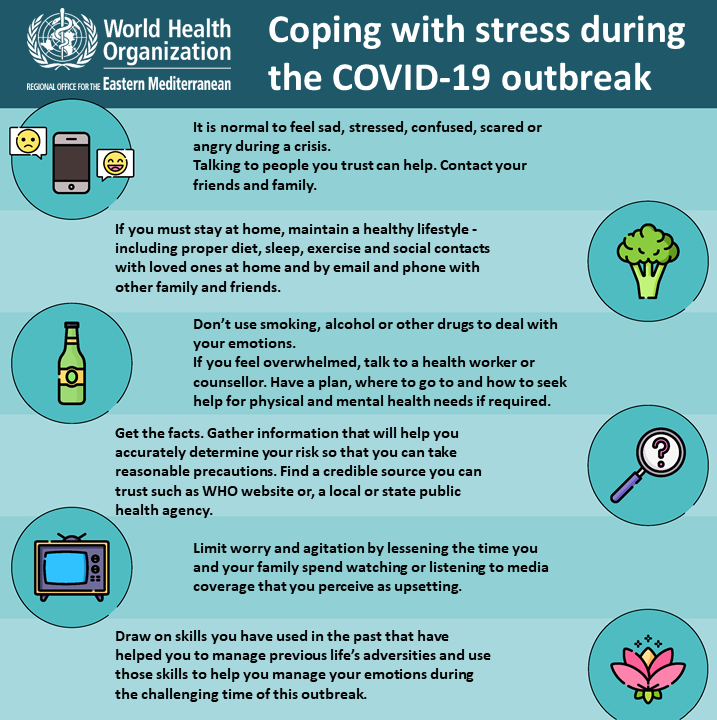Coping with Pandemic Challenges: Strategies for Resilience

Navigating the Storm: Strategies for Resilience Amid Pandemic Challenges
The ongoing global pandemic has presented unprecedented challenges, affecting individuals and communities on a profound level. However, amidst the chaos, there are strategies for coping with pandemic challenges that can foster resilience and empower individuals to navigate these uncertain times.
Prioritizing Mental Well-being
Coping with pandemic challenges begins with prioritizing mental well-being. The uncertainties, isolation, and constant news updates can take a toll on mental health. Establishing a routine, staying connected with loved ones, and seeking professional support are essential steps in maintaining mental resilience during these trying times.
Adapting to Remote Work and Learning
As remote work and online learning become the new norm, adapting to these changes is crucial. Creating a dedicated workspace, establishing boundaries between work and personal life, and embracing technology for effective communication are vital strategies for success in the era of remote work and learning.
Embracing Change and Flexibility
The pandemic has forced individuals and businesses to adapt to rapid changes. Embracing change and cultivating flexibility are key components of coping with pandemic challenges. This mindset shift allows for a more resilient response to unexpected situations and paves the way for creative problem-solving.
Fostering Connection Despite Physical Distancing
Physical distancing measures may limit face-to-face interactions, but fostering connections is more important than ever. Utilizing technology for virtual gatherings, reaching out to friends and family, and participating in online communities can help maintain a sense of connection and combat feelings of isolation.
Financial Planning and Stability
Economic uncertainties during the pandemic underscore the importance of financial planning. Creating a budget, building an emergency fund, and seeking financial advice can contribute to financial stability and alleviate stress associated with economic challenges.
Health and Wellness Practices
Prioritizing health and wellness is a fundamental aspect of coping with pandemic challenges. Establishing a healthy routine that includes regular exercise, nutritious eating, and adequate sleep can enhance physical resilience. Additionally, following recommended health guidelines contributes to overall well-being.
Learning New Skills and Hobbies
The pandemic provides an opportunity for personal growth through learning new skills or pursuing hobbies. Whether it’s picking up a musical instrument, acquiring a new language, or exploring creative pursuits, engaging in activities that bring joy and fulfillment can serve as a constructive coping mechanism.
Staying Informed Responsibly
While staying informed about the pandemic is essential, consuming excessive information can contribute to anxiety. Practicing responsible information consumption, fact-checking sources, and taking breaks from news updates can help strike a balance between staying informed and preserving mental well-being.
Community Support and Solidarity
Communities play a crucial role in coping with pandemic challenges. Offering support to neighbors, participating in community initiatives, and fostering a sense of solidarity contribute to collective resilience. Acts of kindness and empathy create a network of support that benefits individuals and the community as a whole.
Building a Resilient Future
Coping with pandemic challenges is not only about surviving the present but also about building a resilient future. By implementing these strategies, individuals can cultivate the strength needed to face ongoing uncertainties, contribute to collective well-being, and emerge from the pandemic stronger and more resilient.
For more information on coping with pandemic challenges and fostering resilience, visit Coping with Pandemic Challenges.
Embracing Distance: Navigating Social Changes During the Pandemic

Redefining Social Dynamics: Navigating the Era of Social Distancing
The global pandemic has reshaped the way we interact, with social distancing emerging as a crucial preventive measure. In this exploration, we delve into the impact of social distancing on our lives and strategies for navigating these changes.
The Essence of Social Distancing
Social distancing, a term that has become ingrained in our daily lexicon, refers to measures taken to limit close physical contact between individuals. It serves as a fundamental strategy in reducing the spread of the virus, emphasizing the importance of maintaining physical distance to protect public health.
Challenges of Social Isolation
While essential for public safety, social distancing brings forth its set of challenges, particularly social isolation. The reduction of in-person interactions can lead to feelings of loneliness, anxiety, and even depression. Understanding and addressing these challenges is essential for fostering mental well-being during this unique time.
Impact on Social Gatherings and Events
Social distancing has transformed the landscape of social gatherings and events. Large gatherings, once a common aspect of our social lives, are now limited or prohibited in many places. Weddings, concerts, and celebrations have undergone significant changes, requiring innovative approaches to maintain connections.
Adapting Social Interactions: The Rise of Virtual Connectivity
The limitations on physical proximity have accelerated the adoption of virtual connectivity. Video calls, virtual meetings, and online social events have become integral in maintaining connections. While not a perfect substitute, these tools have proven invaluable in bridging the gap created by social distancing.
Navigating Changes in Work Environments
The workplace is one arena profoundly affected by social distancing measures. Remote work has become the norm for many, altering the dynamics of traditional office settings. Adapting to virtual collaboration tools and establishing work-life boundaries are essential for maintaining productivity and employee well-being.
Impact on Educational Systems and Learning
Educational institutions globally have had to adapt swiftly to the challenges posed by social distancing. Remote learning, online classes, and hybrid models have become prevalent. Ensuring educational continuity while addressing the diverse needs of students remains a complex but vital objective.
Economic Implications: Business Transformations
Businesses across sectors have undergone transformations to comply with social distancing guidelines. Retail spaces implement crowd control measures, restaurants shift to takeout and delivery models, and digital platforms witness a surge in usage. The economic landscape evolves in response to the imperative of social distancing.
The Role of Technology in Social Distancing Measures
Technology plays a pivotal role in implementing and enhancing social distancing measures. Contact tracing apps, occupancy monitoring systems, and digital health tools contribute to effective management. The ongoing integration of technology underscores its significance in shaping our new social normal.
Social Distancing as an Act of Solidarity
Understanding social distancing as an act of solidarity is crucial. By adhering to these measures, individuals contribute to the collective effort in protecting the vulnerable and preventing the spread of the virus. Recognizing the broader societal impact reinforces the importance of these seemingly individual actions.
Social Distancing Pandemic: Navigating Together
As we navigate the challenges posed by social distancing, staying informed about strategies and adapting to changes is key. Explore insights on managing social distancing during the pandemic at Social Distancing Pandemic. Together, let us embrace distance while staying connected and resilient in the face of change.





